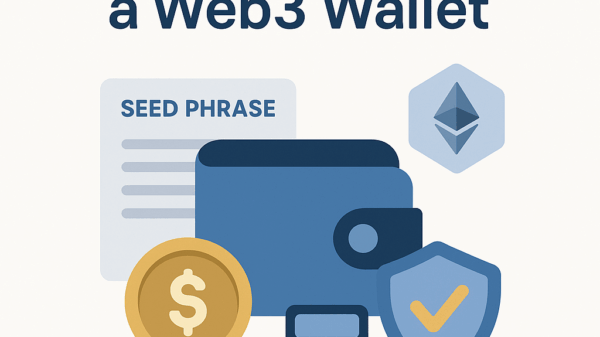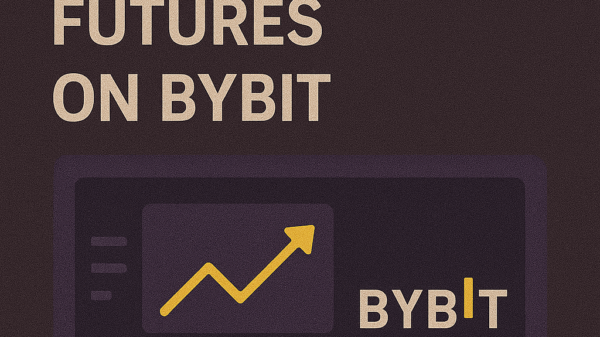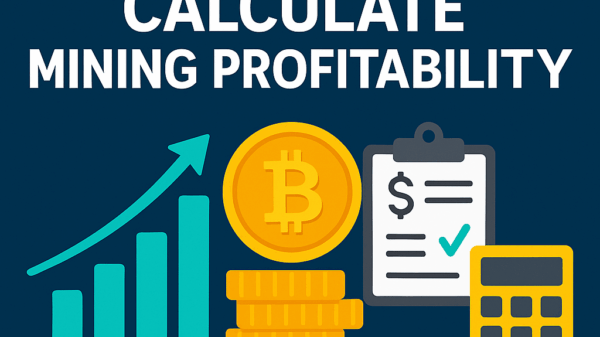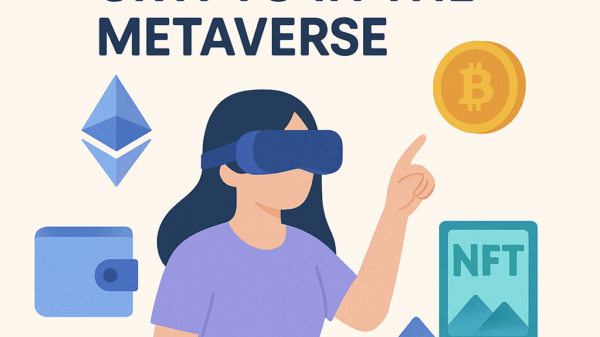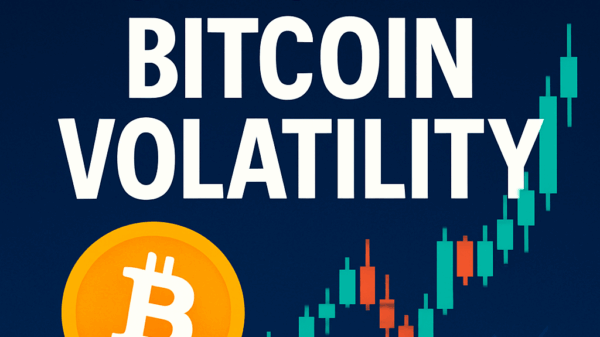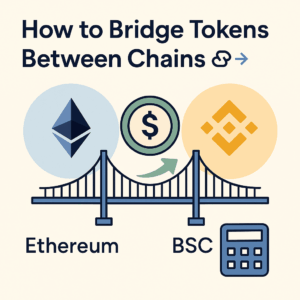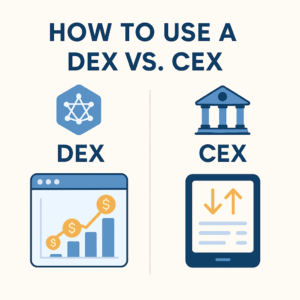How to Yield Farm on PancakeSwap
By Jason Miller – Crypto Writer 10.expert 🧠 Covering Bitcoin, altcoins, blockchain & Web3.
As a crypto writer and analyst based in the U.S., I’ve seen the DeFi explosion on the Binance Smart Chain (now BNB Smart Chain). At the forefront of this movement has been PancakeSwap, a decentralized exchange (DEX) that revolutionized yield farming by offering attractive returns on BEP-20 tokens. Yield farming, for the uninitiated, is essentially a strategy where you leverage your crypto assets to generate more crypto. It often involves providing liquidity to a decentralized exchange and then “staking” the resulting Liquidity Provider (LP) tokens to earn additional rewards.
PancakeSwap’s success comes from its user-friendly interface and its native token, CAKE, which serves as both a governance token and the reward for participating in its farms and Syrup Pools. While the high Annual Percentage Yields (APYs) of 2020-2021 are rarer in 2025’s more mature market, yield farming on PancakeSwap still offers compelling opportunities for passive income, albeit with inherent risks like impermanent loss.
Let’s dive into how to yield farm on PancakeSwap, focusing on the mechanics and important considerations.
How to Yield Farm on PancakeSwap: Grow Your Crypto on BNB Smart Chain 🥞💰
Yield farming on PancakeSwap involves a few steps, but once you get the hang of it, you can put your crypto to work and earn passive income.
Understand Yield Farming & Liquidity Provision 💡
- Liquidity Provision (LP): PancakeSwap, like other Automated Market Makers (AMMs), relies on liquidity pools. Users deposit two tokens in a specific ratio (e.g., BNB and CAKE) into a smart contract, providing liquidity for others to trade. In return, you receive LP tokens (e.g., CAKE-BNB LP).
- Yield Farming: This is the act of staking those LP tokens in a “Farm” on PancakeSwap to earn additional rewards, typically in CAKE tokens. You’re effectively earning a share of trading fees plus farm rewards.
Set Up Your Wallet on BNB Smart Chain 🦊
- MetaMask (or other BEP-20 compatible wallet): Ensure your MetaMask (or Trust Wallet, WalletConnect-compatible wallet) is configured for the BNB Smart Chain (BSC) network. If not, you’ll need to add the network RPC details.
- Fund Your Wallet with BNB: You’ll need BNB (BNB Chain’s native token) to pay for gas fees on every transaction (swapping, providing liquidity, staking, harvesting).
Acquire the Necessary Tokens for a Liquidity Pair 🔄
- Choose a Farm: Go to PancakeSwap’s “Farms” section (
pancakeswap.finance/farms). Browse the available farms and their corresponding APRs (Annual Percentage Rates). Note the two tokens required for the LP pair (e.g., CAKE-BNB, BTCB-BNB). - Swap Tokens: If you don’t have both tokens in the required amounts, use PancakeSwap’s “Swap” feature to acquire them. Remember, you’ll generally need roughly equal dollar values of each token to provide liquidity.
Provide Liquidity to Create LP Tokens 💧
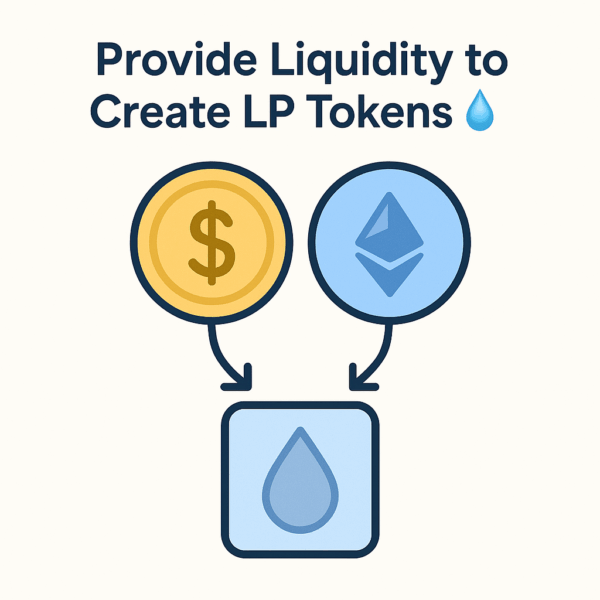
- Go to “Liquidity”: On PancakeSwap, navigate to “Trade” then “Liquidity” or directly from the “Farms” page, click “Add Liquidity” for your chosen farm.
- Select Token Pair: Choose the two tokens you intend to provide liquidity for.
- Enter Amounts: Input the amount of one token; the interface will automatically calculate the equivalent amount of the other token needed.
- Choose Fee Tier (PancakeSwap V3): For V3 farms, select an appropriate fee tier (e.g., 0.25%, 1%). This impacts trading fees you earn and liquidity concentration.
- Set Price Range (PancakeSwap V3 – Crucial for Impermanent Loss): For V3, you’ll need to set a price range within which your liquidity will be active.
- “Full Range”: Provides liquidity across all prices (similar to V2). Less capital efficient but less active management.
- “Concentrated Liquidity”: Specify a tighter price range. More capital efficient (earn more fees with less capital) but significantly increases the risk of impermanent loss and requires active management. If the price moves out of your range, your liquidity stops earning fees.
- Approve & Supply: Approve both tokens for spending (if it’s your first time) and then “Supply” the liquidity. Confirm the transactions in your wallet.
- Receive LP Tokens/NFT: You will receive either LP Tokens (for V2) or a Liquidity Position NFT (for V3) representing your share of the liquidity pool.
Stake Your LP Tokens/NFTs in a Farm 🚜
- Return to “Farms”: Go back to the “Farms” page on PancakeSwap.
- Find Your Farm: Locate the farm corresponding to the LP tokens/NFTs you just acquired.
- Enable Farm: Click “Enable” and confirm the transaction in your wallet (this is an approval for PancakeSwap to interact with your LP tokens/NFTs).
- Stake LP Tokens/NFTs: Once enabled, click “Stake LP” (or equivalent for V3 NFTs). Enter the amount of LP tokens/NFTs you wish to stake and confirm the transaction in your wallet.
Monitor Your CAKE Rewards 📈
- Real-time Tracking: Your staked LP tokens will immediately start earning CAKE rewards, which will be displayed in real-time on the Farm’s interface.
- “Harvest” Rewards: You can harvest your accumulated CAKE rewards at any time by clicking the “Harvest” button. Each harvest is a transaction and incurs a small BNB gas fee.
Understand Impermanent Loss (IL) 📉
- The Biggest Risk: Impermanent Loss occurs when the price ratio of the two tokens in your liquidity pool changes significantly from when you deposited them.
- How it Works: The AMM algorithm rebalances the pool to maintain the 50/50 value ratio. If one token’s price goes up, the pool sells some of that token for the one that didn’t increase as much, leading to you ending up with more of the poorer-performing asset.
- When it Becomes Permanent: The “loss” is “impermanent” because it only becomes real if you withdraw your liquidity before the token prices return to their original ratio.
- Mitigation: IL can be offset by the trading fees you earn and the CAKE farming rewards, but it’s a critical risk to understand, especially with volatile pairs. Stablecoin-stablecoin pools (e.g., BUSD-USDT) have minimal IL risk.
Calculating Your True APR/APY 📊
- APR (Annual Percentage Rate): This is the simple interest earned, not factoring in compounding. PancakeSwap typically shows APR for farms.
- APY (Annual Percentage Yield): This includes the effect of compounding your rewards (reinvesting them). To achieve APY, you would need to regularly harvest your CAKE and stake it back into the farm (if possible) or into a Syrup Pool.
- Consider LP Fees + Farm Rewards: Your total return includes both the trading fees you earn as an LP and the CAKE rewards from farming.
Harvesting and Compounding Strategies 🔄
- Regular Harvesting: You can choose to harvest rewards periodically.
- Compounding: To maximize returns, you can harvest your CAKE, swap half of it for the other token in your LP pair, add that new pair as liquidity, and stake the new LP tokens. This is often automated by “auto-compounding” farms or third-party yield optimizers.
Unstaking and Removing Liquidity 📤
- Unstake LP Tokens/NFTs: When you want to stop farming, go to the farm, click “-“, and unstake your LP tokens/NFTs. This will also automatically harvest any pending CAKE rewards.
- Remove Liquidity: Go to the “Liquidity” tab, select your LP position, and click “Remove.” You’ll receive your two original tokens back (in potentially different quantities than you deposited due to impermanent loss and trading fees).
Risks Beyond Impermanent Loss ⚠️
- Smart Contract Risk: Bugs or vulnerabilities in the PancakeSwap smart contracts (though PancakeSwap is highly audited, no system is 100% risk-free).
- Token Price Volatility: The value of the tokens you’re holding (and earning) can drop significantly.
- Rug Pulls: For smaller, unverified projects, providing liquidity can expose you to “rug pulls” where developers drain the liquidity pool. Stick to reputable pairs on PancakeSwap.
- Regulatory Risk: The DeFi space is still largely unregulated; new regulations could impact profitability or access.
Tax Implications 🧾
- Taxable Events: In the U.S., earning CAKE rewards from farming is generally considered taxable income at its fair market value at the time of receipt.
- Capital Gains/Losses: Swapping tokens or removing liquidity (if the value of your received tokens differs from your initial deposit, adjusted for IL) can trigger capital gains/losses.
- Record Keeping: Keep meticulous records of all your transactions (deposits, stakes, harvests, withdrawals) for tax reporting. Consider using crypto tax software.
Stay Updated with PancakeSwap V3 & Future Iterations 📰
- PancakeSwap continually updates its platform. V3 brought concentrated liquidity and new fee tiers. Stay informed about new features, changes to farm multipliers, and tokenomics of CAKE.
Use Reliable Tools 🛠️
- Gas Trackers: Use a reliable BSC gas tracker to estimate transaction costs.
- Profitability Trackers: Tools like ApeSwap’s yield farm tracker or others can help monitor your positions.
Start Small and Learn 🌱
- If you’re new to yield farming, start with a small amount of capital that you’re comfortable losing. Gain experience with the process, understand how impermanent loss affects your specific pair, and gradually scale up.
Yield farming on PancakeSwap can be a lucrative way to maximize your crypto holdings, but it’s essential to approach it with a clear understanding of the risks, especially impermanent loss. By following these steps and staying informed, you can effectively participate in the decentralized finance revolution.


